chapter18双语课件
- 格式:doc
- 大小:149.00 KB
- 文档页数:5
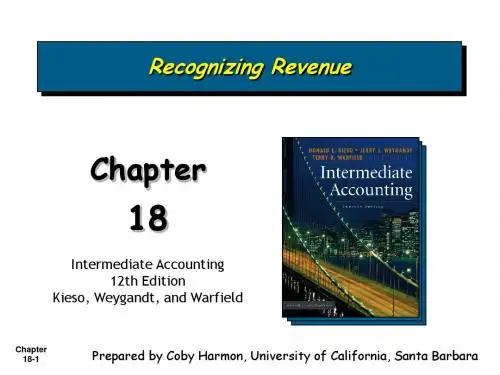
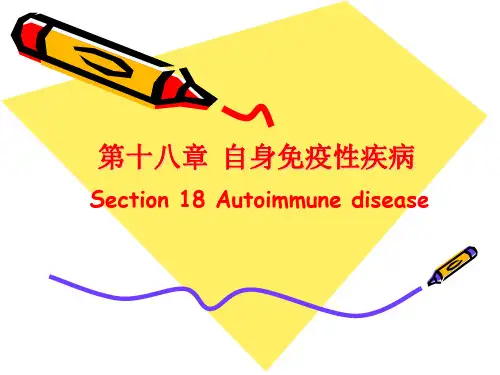


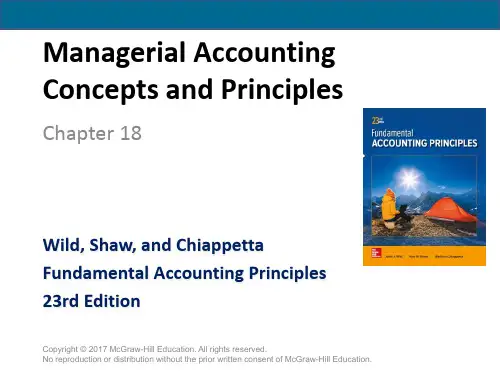
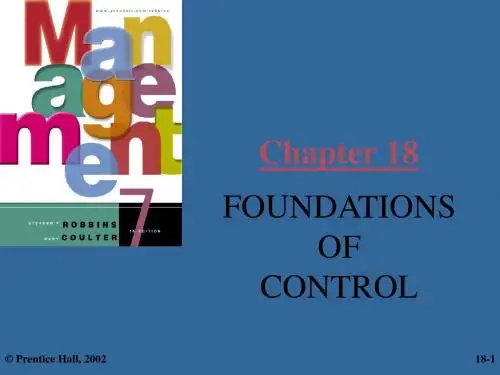

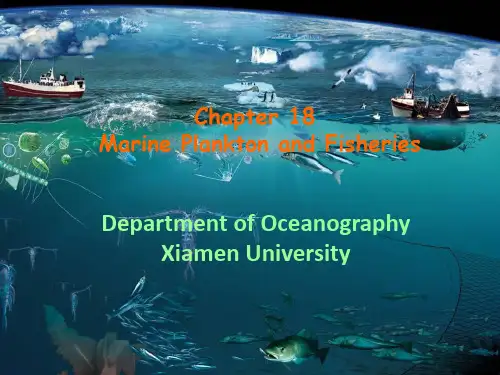
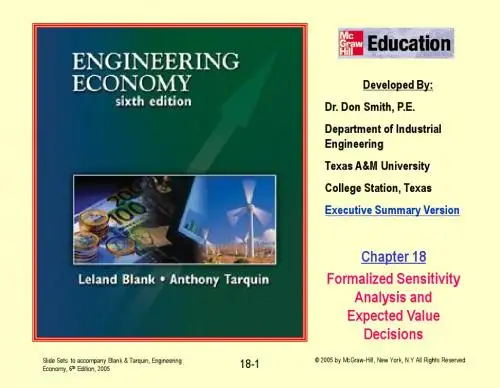
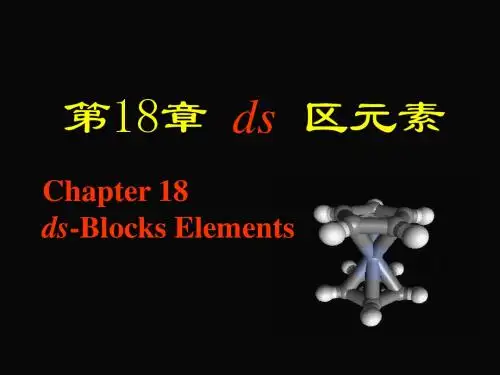

18Directors1 General1.1 Types of directorCompany may have in addition to its full time executive directors:Non-executive directors: Part timeGenerally have specific expertise.Take objective standpoint and question executive directors' actions.De facto directors: Person who purports to act as or occupies position of director.May as a consequence be treated as if they were directors.See agency notes for possible liability.Shadow directors: Not formally appointed.Are persons in accordance with whose instructions directors areaccustomed to act.Have the same duties liabilities and obligations as any other director.1.2 Minimum numbers(a) Private company: one director.(b) Public company: two directors.(c) Both private and public companies must also appoint a company secretary. This personcannot also be sole director.OverviewADMINISTRATIVEEligibility Appointment Removal1.3 Persons eligible:(a) Anyone can be appointed except:(i) persons disqualified by the articles.Table A disqualifies lunatics, or absentees from board meetings for more than 6months without consent;(ii) undischarged bankrupts;(iii) company's auditor;(iv) anyone over 70 unless:permitted by articles, or(plcs only) where appointment is approved in GM (s.293)(v) persons disqualified by Company Directors Disqualification Act 1986.(b) Effect of order under CDDA 1986:A person is disqualified from being (s.1)(i) a director/shadow director(ii) liquidator/administrator/receiver(iii) involved in any way in the promotion, formation or management of a company.(c) Reasons for disqualification:1 Conviction re indictable offence2 Persistent failure to make returns.(3 or more in last 5 years).3 Fraud, or breach of duty in winding-up.4 Unfitness.5 Following investigation (DTI).6 Following fraudulent or wrongful trading.1.4 Appointment, Retirement and Removal(a) First directors:Can be appointed by:(i) subscribers to the memorandumsubscribers sign a 'notice of appointment';(ii) being named in articlesappointment takes effect on incorporation;(iii) appointment at first GM.(b) Subsequent and additional directors:Subsequent appointments are made in accordance with the articles.This includes:(i) appointment by OR in GM(ii) appointment by the Board to fill casual vacancies.(iii) Appointment by the Board of additional directors who are put forward for appointment by members at next GM.(c) Retirement(i) Directors retire by rotation in accordance with the articles.(ii) Table A provides:1/3 of the directors retire at each AGM.Done on FIFO basis.Retiring directors are eligible for re-election.1.5 Removal (s.303)(a) Done by OR(b) (i) Special notice (28 days) required.(ii) No automatic right to compel inclusion of s.303 resolution.Members may have to satisfy s.376.(c) Director is given opportunity to:circularise members with statement under 1,000 wordsaddress the meeting.(d) There may also be breach of contract under director's service contractSouthern Foundries v Shirlaw(e) Weighted voting rights may make s.303 ineffective.Bushell v Faith(f) Directors of a partnership type company may apply for:(i) a winding up under s.122 IA 1986 – just and equitable grounds.(ii) action under s.459 – conduct unfairly prejudicial.1.6 RemunerationDirectors may be remunerated even if a company is making losses, provided that payment is not 'excessive or unreasonable'.OverviewDIRECTORS' DUTIES TO THE COMPANYGeneral Fiduciaryduty duty2 Directors' duties2.1 General duty(a) Directors must comply with the Companies Act and the general law.There are three primary duties:(i) To exercise the degree of skill and care that might reasonably be expected from aperson possessing the same degree of skill.(ii) Fiduciary duties: 1 To act honestly and in good faith and2 The proper purpose rule.(iii) A duty to comply with statutory requirements of CA and other relevant legislation.(b) A duty of disclosure to the company exists in relation to (ii) and (iii) above.2.2 The duty of reasonable skill and care.(a) This is a common law duty.It comprises a duty to manage the company:in accordance with its constitutionin accordance with company law.(b) What is the standard required?–Not to act negligently.–To demonstrate the skill and care of a reasonable man looking after his own business affairs.Case law: Standard required first set down in Re: City Equitable Fire Insurance Co (1925):(i) No greater degree of skill than may reasonably be expected from a person of hisknowledge and experience;(ii) Not bound to give continuous attention to company.(iii) May delegate duties.(c) Standard refined by later case law: if director is an expert in a certain field a higher degree ofcompetence is required. Eg. accounting or finance.Dorchester Finance Co Ltd v Stebbing.2.3 Fiduciary duties(a) Directors owe fiduciary duties to the company. Their duty is like that of agent or trustee.Directors do not owe general fiduciary duties to individual shareholders employees orcreditors although the common law and statute may impose duties in certain circumstances.Relevant provisions are considered post.(b) The principal duty is to act bona fide in the best interests of the company. Company lawviews this as a requirement that directors should always act for the benefit of the company asa whole and not to further their own interest.It prevents a director from using a corporate opportunity for his own personal gain.This would constitute a conflict of interest between the company and the director.(c) If a director is to make a profit he must account for it to the company.This involves disclosure to the company of any interest in company transactions.(d) This duty of disclosure is covered by case law. There are three keys cases illustrating theextent to which directors are caught by the duty:(i) Cook v Deeks : Dishonest directors committing an intentional exploitation ofcorporate opportunity(ii) IDC v Cooley: Director taking improper advantage of a corporate opportunity(iii) Regal (Hastings) : Honest directors unintentionally exploiting a corporateopportunityLtd v GulliverHowever case law says a director may take up a corporate opportunity if the company haslegitimately rejected it: Peso Silver Mines v Cropper.(e) Directors must also act for a proper purpose eg in share issues: Howard Smith v AmpolPetroleum. (See share capital chapter 24).2.4 The duty of disclosure:(a) A director is primarily accountable to the company. The duty of disclosure may be delegatedto the Board as in table A.(b) Disclosure must be made by directors of interests in contracts to be made with the companyand of profit made as a result of transactions.(c) Disclosure requirements:(i) A full declaration is required.(ii) It is either made to GM who can approve by ordinary resolution or under Art 85 ofTable A to the Board.In GM: Director can vote in their own favour.In Board Meeting: Director cannot vote.Will not count as quorum.(iii) Effect of failure to comply: Contract is voidable by the Company.Directors may be personally liable to account to, or indemnify, the company.May also be held to be trustee of the proceeds on a constructive trust in favour of thecompany.(d) In addition directors must comply with s.317 CA85:(i) The rule is to prevent exploitation of your position as a director.(ii) A general declaration is required, of interests in contracts to be made with thecompany and of profit made as a result of transactions.(iii) It is made to the full Board, and not a subcommittee: Guinness Plc v Saunders.(iv) It is made at first meeting after director becomes aware of his interest.(v) Effect of failure to comply: contract is still valid but director is liable to a fine.(e) Duty of disclosure in accounts:What? All loans and property transactions.Any material interest.Not required:–where interest is less than £1,000, or if more, is less than the lower of £5,000 or 1% of year end net assets.–if at arm's length.2.5 The duty of statutory complianceOverviewTHE DUTY OF STATUTORY COMPLIANCEInterests of Interest in Contracts Substantialemployees contract of employment propertytransactionsIn addition to the disclosure duties directors are also bound to observe statutory limitations ontheir powers and to comply with statutory requirements before entering into certain types of contract.All references are to CA 1985.(a) Directors to have regard to interests of employees (s.309)–When performing their duties directors are to have regard to the interests of thecompany’s employees as well as its members.–The actual duty however is owed to the company, and is a fiduciary duty enforceable by company as such.(b) Interests in contracts (s.317)(i) The aim of the statutory rule is to prevent exploitation of your position as a director.(ii) A general declaration only is required.(iii) It is made to the full Board, and not a subcommittee: Guinness Plc v Saunders.(iv) It is made at first meeting after director becomes aware of his interest.(v) Effect of failure to comply: contract is still valid but director is liable to a fine.(c) Contracts of employment (s.319)–No longer than five years unless approved in GM or terminable by notice–Recorded in a Register.–If greater than 6 month overlap between old and new both must aggregate at less than5 years.If Table A applies a director must not vote on the terms of his own service contract. Copies ofdirectors service contracts must be available for inspection at the Registered Office.(d) Substantial property transactions (s.320)–Relates to contracts to transfer to, or receive from, a director a non-cash asset.–Companies Act defines this as being:over £100,000 in value or exceeding 10% of company’s net assets whichever is thelowest.Items under £2,000 can be ignored.–Prior approval by OR in GM required.(e) Interests in shares/debentures (s.324)–Interests must be disclosed to the company in writing–Recorded in a Register–Failure to disclose: Director liable to fine or imprisonment.OverviewLOANS TO DIRECTORSDefinitions and Rules Exceptions(f) Loans to directors (s.330)(i) The CA 1985 applies to:Loans: company lending money to a director eg. to buy personal goods, and to repay.Quasi loans: director incurs personal expenditure and company pays the bill.Credit: company supplies goods or services to a director on deferred payment terms.(ii) The S.330 rule:All companies:Loans to directors are prohibited.Relevant companies:Quasi loans and credit are also prohibited.‘Directors’ includes connected persons.CA 1985 defines:‘Relevant companies’ as plcs or private companies, part of a group in which one ormore member companies is not a private company.‘Connected persons’ as the spouse, child or step child of a director or a company inwhich the director holds 1/5 of the equity share capital or 1/3 of the voting rights.Exceptions(iii) The S.334 exception and exceptions in general:–Companies can lend to directors (not connected persons) provided theaggregate amount of the loan does not exceed £5,000.–Companies can make loans to assist the director in the performance of hisduties or to meet expenditure incurred on behalf of the company.Prior approval required by OR in GM or written resolution.2.6 Exemption from liability for breach of duty(a) Companies Act 1985 sets statutory limits on excluding directors' liability.(b) S.310: Cannot exclude liability or provide indemnity to an officer of the company or itsauditors for liability arising from:NegligenceDefaultBreach of dutyApplies to exclusions in:ArticlesAny contract with the company. Company can insure against liability.S.727:Officer of company can apply to court to relieve him of liability.Application will be granted where officer has acted honestly and reasonablyand ought fairly to be excused.S213/214 IA86:Fraudulent and wrongful trading.3 The division of power3.1 General(a) Company law divides the exercise of power between:the board of directors andthe members in general meetings.The division is governed by the articles, and can be varied according to the individualcompany's structure.Individual directors derive authority either expressly through the articles or Board or via law ofagency.(b) Table A Article 70: confers on the Board the right to manage the company and to exercise allthe powers of the company, subject to provisions of the Companies Act and those powersconferred on members in the articles.(c) Agency:Director acts as agent for the company. Can bind the company in contracts.Authority of Agent: The authority to act attached to a specific order, or implied from theimplied: position held within the company. Managing director: can bind company in allcommercial contracts. Company secretary: can bind company in all administrative contracts.3.2 Position of third parties(a) Third parties are generally concerned that the action of the director can be relied upon asbeing within the law and the company's constitution.(i) CA 1985:s.35A: can rely (if TP acting in good faith) on the unlimitedpower of directors to bind the company.However s.35(3): Directors must observe any limitation on their powers inthe company's memorandum.Apparent – Implied:Where it appears to TP they have authority, and company'sboard acts in support of this appearance, then TP can rely ondirectors having authority to act.Freeman and Lockyer v Buckhurst Park Properties: Managing directorPanorama v Fidelis Furnishing Fabrics Ltd: Company secretary.(b) Control by members: Own the business and so wish to control its future. In relation to adirector's actions they can:Override: By ordinary resolution where power is shared.Alter: Article 70: to restrict a director's specific powers.Articles generally: to reduce director's powers.Remove: By s.303Restrain: An ultra vires act by injunctionSue: For breach of duty in relation to ultra vires action.Validate: An ultra vires act by special resolution.Absolve: Directors from breach of duty by special resolution.4 Officers with special responsibilityThe managing director4.1 (a) A managing director may be appointed by the other directors if they are permitted to by thearticles (Table A Article 107).(b) The MD can be dismissed by the Board but will remain a director unless dismissed at a GM.(c) His powers and duties depend on his service agreement.(d) MDs are not normally subject to retirement by rotation, but usually lose office if they cease tobe a director.(e) A managing director is not a 'servant' of the company for the purpose of receiving preferentialpayment of his salary on winding-up.Secretary4.2 (a) The company secretary may not also be the sole director (even if the company has only onemember).(b) In a public company s.286 imposes a duty on directors to satisfy themselves that the personappointed as secretary can adequately fulfil the position. The specific requirements are:(i) a qualified accountant(ii) a barrister or solicitor(iii) person who has been company secretary in a plc for 3 out of the last 5 years(iv) a person who was company secretary on 22 December 1980(v) a chartered secretary(vi) any other person who appears to be capable by virtue of any other position held. 5 AuditorsDefinition5.1 An audit is an independent examination and expression of opinion upon the financial statements ofan enterprise.5.2 The audit report may be: s.235(a) unqualified(b) qualifiedThis relates to whether, in the auditor's opinion, the accounts give a true and fair view of thecompany's financial statements.Appointment5.3 Every company must appoint auditors: s.389This is made by:(a) normally members in AGM where accounts are laid: s.385(b) directors or members in GM for first auditors or to fill casual vacancy(c) failing the above by Secretary of State.Termination of office5.4 (a) Removal by ordinary resolution with special notice, auditors having right to:(i) circularise a written statement to members(ii) speak in General Meeting.(b) Resignation by notice in writing to registered office(i) auditors must submit written statement to company(ii) auditors can requisition an EGM.(c) Auditor does not seek re-electionauditors must submit written statement to company.Eligibility as company auditor5.5 (a) Must be eligible under rules of a recognised supervisory body: s.29 CA '89(b) Auditor must be independent of the company ie: cannot be: s.27 CA '89:(i) director or employee of company; or(ii) partner or employee of such a person.Auditors liability5.6 (i) A duty of care is owed to the company itself with whom the auditor has a contractualrelationship.(ii) An auditor may also owe a duty to 3rd parties if there is a 'special relationship' between them, where the auditor knows or ought reasonably to know his skill or judgement is beingrelied on, and it is reasonable for the 3rd party to rely on it.(iii) However, in Caparo Industries plc v Dickman & Others the House of Lords of Appeal held that auditors did not owe a duty to potential shareholders.(iv) Auditors have been held to be not liable to banks who rely on the accounts when deciding whether to lend or continue to lend to companies.•(v) Auditors will still be liable where evidence exists that a special relationship existed between the auditor and claimant. Such as representations expressly made to the claimant.。
Chapter 18 Biosynthesis of Amino Acids , Nucleotides and RelatedMolecules第18章氨基酸,核酸,以及相关分子的生物合成1.ATP Consumption by Root Nodules in Legumes(豆类根瘤中的ATP消耗)Bacteria residing in the root nodules of the pea plant consume more than 20% of the ATP produced by the plant. Suggest why these bacteria consume so much ATP.:居住在豆类植物根瘤中的细菌要消耗多于植物产生的ATP的20%。
提出为什么这些细菌会消耗如此多的ATP。
2. Glutamate Dehydrogenase and Protein Synthesis(谷氨酸脱氢酶和蛋白质的合成)The bacterium Methylophilus methylotrophus can synthesize protein from methanol and ammonia. Recombinant DNA techniques have improved the yield of protein by introducing into M. methylotrophus the glutamate dehydrogenase gene from E. coli. Why does this genetic manipulation increase the protein yield?细菌Methylophilus methylotrophus可以从甲醇和氨水来合成蛋白质。
重组DNA技术已经通过向Methylophilus methylotrophus中引入来自于E. coli的谷氨酸脱氢酶基因改进了蛋白质的生产。
PROBLEMS_18-1 Electrical Potential Energy1. A 3 μC charge is brought in from infinity and fixed at the origin of a coordinate system. (a) How much work is done? (b) A second charge, of 5 μC, is brought in form infinity and placed 10 cm away from the first charge. How much does the electric field of the first charge do when the second charge is brought in? (c) How much work does the external agent do to bring the second charge in if that charge moves with unchanging kinetic energy?2. A charge of 4 μC is placed at the point x = 2, y = 3, z = 0 (all distances given in centimeters). Calculate the work done in bring a charge of -8 μC from x =2, y = 15, z = -30 to the point x = 2, y = 12, z = 6, assuming that the charge is moved at a steady speed.3. Derive an expression for the work required to set up the four-charge configuration of Fig.18-15, assuming the charges are initially infinitely far apart. Let V=0 at infinite.4. Two point charges are located on the x -axis, e q -=1 at 0=x and e q +=2 ata x =. (a) Find the work that must be done by an external force to bring a third point charge e q +=3 from infinity to a x 2=. (b) Find the total potential energy of the system of three charges.5. .A particle of positive charge Q is fixed at point P . A second particle of mass m and negative charge –q moves at constant speed in a circle of radius r 1, centered at P . Derive an expression for the work W that must be done by an external agent on the second particle to increase the radius of the circle of motion to r 2.18-2 Electric Potential6. Charges +q , -q , +q , and -q are placed on successive corners of a square in the xy -plane.Plot all locations in the xy -plane where the potential is zero.7. The origin of a coordinate system is at the intersection point of the perpendicular bisectorsof the sides of an equilateral triangle of sides 10 cm. Calculate the potential at the origin due to three identical charges of 0.8 μC placed at the corners of the triangle.8. A charge Q is distributed uniformly over the surface of a spherical shell of radius R . Howmuch work is required to move these charges to a shell with half the radius? The charges are again distributed uniformly.9. Calculate the potential inside and outside a sphere of radius R and charge Q , in which thecharge is distributed uniformly throughout the sphere.10. As a space shuttle moves through the dilute ionized gas of Earth ’s ionosphere, its potentiala ++q--q Fig. 18-15 Problem 3.is typically changed by -1.0 V during one revolution. By assuming that the shuttle is a sphere of radius 10 m, estimate the amount of charge it collects.11. An infinite nonconducting sheet with positive surface charge density σ on one side. (a)Show that the electric potential of an infinite sheet of charge can be written as (/),00V V 2z σε=-where V 0 is the electric potential at the surface of the sheet and z is the perpendicular distance from the sheet. (b) How much work is done by the electric field of the sheet as a small positive test charge q 0 is moved from an initial position on the sheet to a final position located a distance z from the sheet?12. A thick spherical shell of charge Q and uniform volume charge density ρ is bounced byradii r 1 and r 2, where r 2 > r 1. With V = 0 at infinity, find the electric potential V as a function of the distance r from the center of the distribution, considering the regions (a) r > r 2, (b) r 1< r < r 2 and (c) r < r 1. (d) Do these situations agree at r = r 2 and r = r 1?13. An electric field of approximately 100 V/m is often observed near the surface of Earth. Ifthis were the field over the entire surface, what would be the electric potential of a point on the surface? (Set V = 0 at infinity.)14. A plastic rod has been formed into a circle of radius R . It has a positive charge +Quniformly distributed along one-quarter of its circumference and a negative charge of -6Q uniformly distributed along the rest of the circumference (Fig. 18-16). With V = 0 at infinity, what is the electric potential (a) at the center C of the circle and (b) at point P , which is on the central axis of the circle at distance z from the center?15. A plastic disk is charged on one side with a uniform surface charge density σ, and thenthree quadrants of the disk are removed. The remaining quadrant is shown in Fig. 18-17. With V = 0 at infinity, what is the potential due to the remaining quadrant at point P , which is on the central axis of the original disk at a distance z from the original center?16. The plastic rod shown in Fig. 18-18 has length L and a nonuniform liner charge density λCR Pz+Q-6QFig. 18-16 Problem 14.= cx , where c is a positive constant. With V = 0 at infinity, find the electric potential (a) at point P 1 on the x axis, a distance d from one end and (b) point P 2 on the y axis, a distance y from one end of the rod.17. An insulated spherical conductor of radius r 1 carries a charge Q . A second conductingsphere of radius r 2 and initially uncharged is then connected to the first by a long conducting wire. (a) After connection, what can you say about the electric potential of each sphere? (b) How much charge is transferred to the second sphere? Assume the connected spheres are far apart compared to their radii.18. A very long conducting cylinder (length L ) of radius R 0 (R 0 << L ) carries a uniformsurface charge density σ. The cylinder is at an electric potential V 0. What is the potential, at points far from the end, at a distance r from the center of the cylinder? Determine for (a) r > R 0 and (b) r < R 0.19. Suppose the flat circular disk of Fig. 18-5 (Example 18-4) has a nonuniform surfacecharge density σ = ar 2, where r is measured from the center of the disk. Find the potential V (x ) at points along the x axis, relative to V = 0 at x = ∞.18-4 Calculating the Field from the Potential20.The electric potential of a charge distribution within some region of space is V (x , y , z ) =Q /4πε0x . Find the electric field in his region.21. Find the electric field of a charge distribution if the electric potential of the distribution isV = Ax 3z - By 2z 2 + C , where A , B , and C are constants.22. Use the result of Problem 16 to find the electric field component E x at point P 1 and E y atpoint P 2.18-5 Potentials and Fields around Conductors23. The same charges are placed on two identical drops of mercury. The drops are isolatedand take perfectly spherical shapes, and the electric potential at the surface of each drop is 900 V . The drops coalesce into a larger drop with a net charge double that of either smaller charge. What is the potential at the surface of this larger charge?24. An electric field of 3⨯106 V/m is sufficiently large to cause sparking in air. Find thehighest potential to which a conductor of radius 10 cm can be raised before breakdown occurs in the air surrounding it. Assumed that zero potential is taken at infinity.25. Two spherical conductors of radii 20 mm and 100 mm are connected by a thin wire andcarry charges q 1 and q 2, respectively. If the wire is cut and the centers of the spheres are250 mm apart, there is a repulsive force of 3.5 N between them. Use this information to calculate (a) q 1 and q 2 and (b) the electric fields at the surfaces when they are connected by the wire.Problems1. (a) 0; (b) -1.35 J; (c) +1.35 J.2. -1.77 J.3. ..20021q a ε-4. (a) ;20e W 8a πε=+(b) .20e U 8a πε=-5. ().012qQ 11W 8r r πε=- 6.7. +3.7⨯105 V .8. .20Q 8R πε9. r < R : ();230Q 3r V 8R R πε=- r > R : .0QV 4r πε=10. ∆q = -1.1⨯10-9 C.11. (b) .00q z W 2σε= 12. (a) ;0Q4rπεxy(b) ();322120r 31r r 322rρε--;()334213Q r r πρ=- (c) ();22210r r 2ρε- (d) yes. 13. 6.4⨯108 V .14. (a) ;05Q 4R πε- (b) ().221205Q 4z R πε-+15. [()].22120z R z 8σε+- 16. (a) [ln()];0cL d 1L/d 4πε-+(b) ).0cy 4πε17. (a) The same; (b) ().2212Q r Q r r =+18. (a) ln ;0000R R V rσε+(b) V = V 0. 19. [()()].22122230a x R R 2x 2x 6ε+-+ 20. .20QE=i 4x πεr r 21. ().2232E 3Ax zi 2Byz j Ax 2By z k =-+--r r r r22. P 1: E x = ,()0Q 4d d L πε+leftward. P 2: E y= (0c14πεupward.23. 1430 V .24. 3⨯105 V .25. (a) 2.2 μC, 11 μC; (b) ˆˆ.;..761122E 49510r E 99010r =⨯=⨯r r r r。